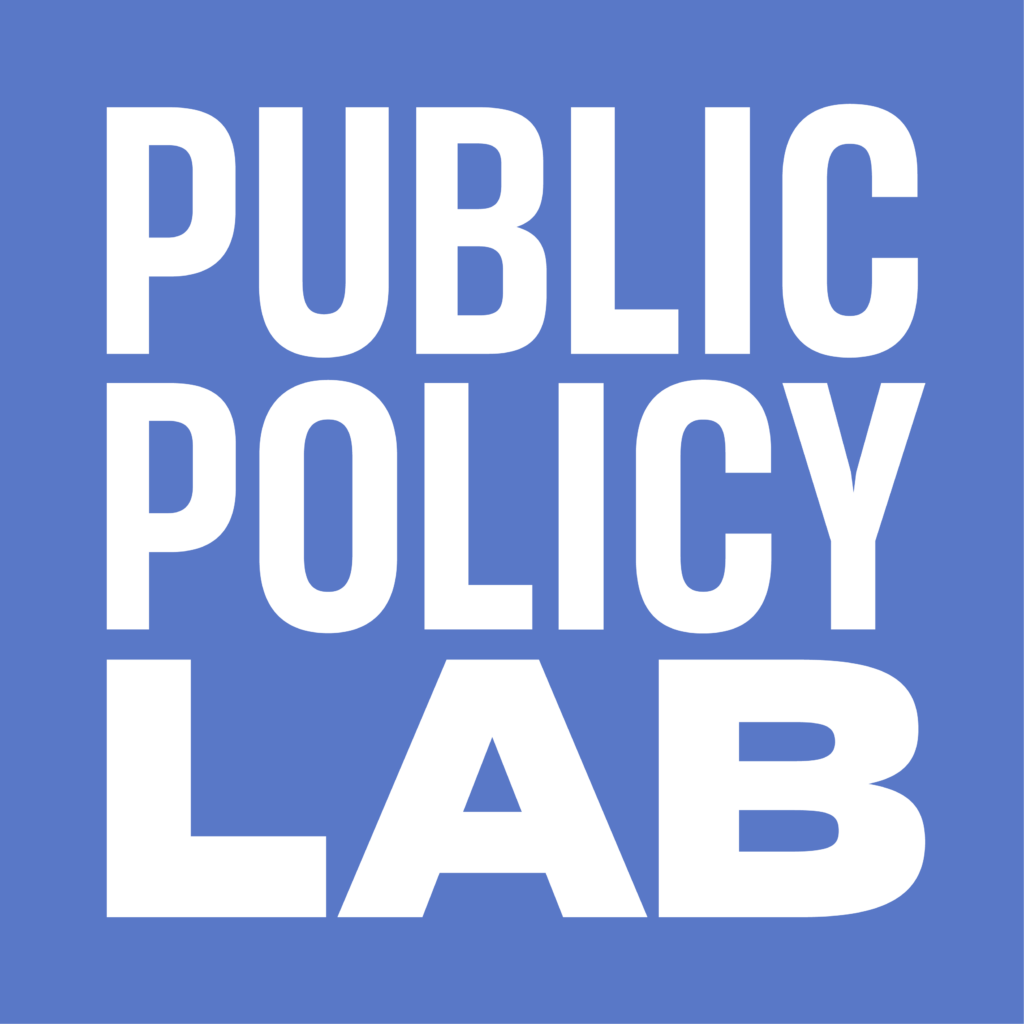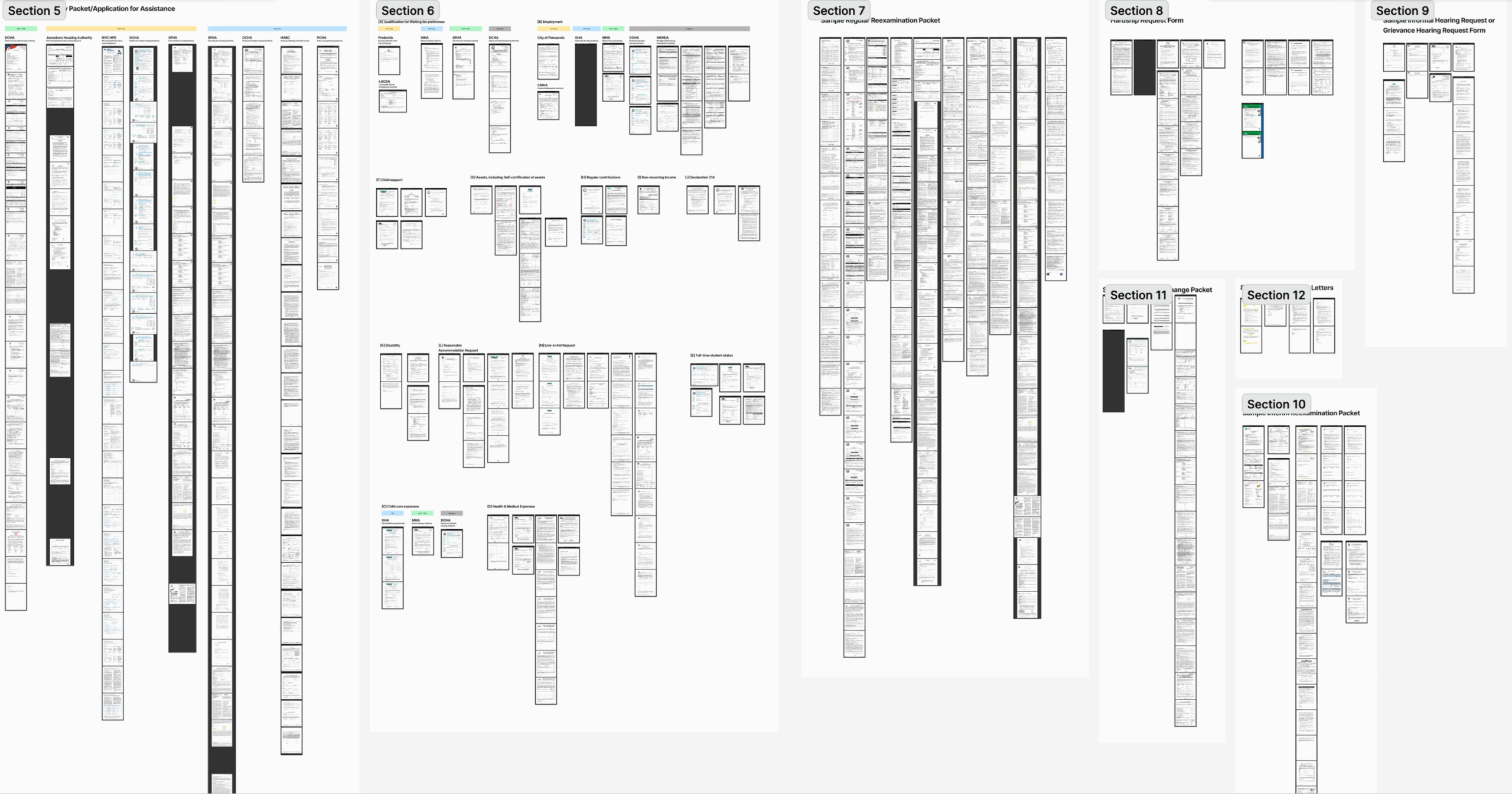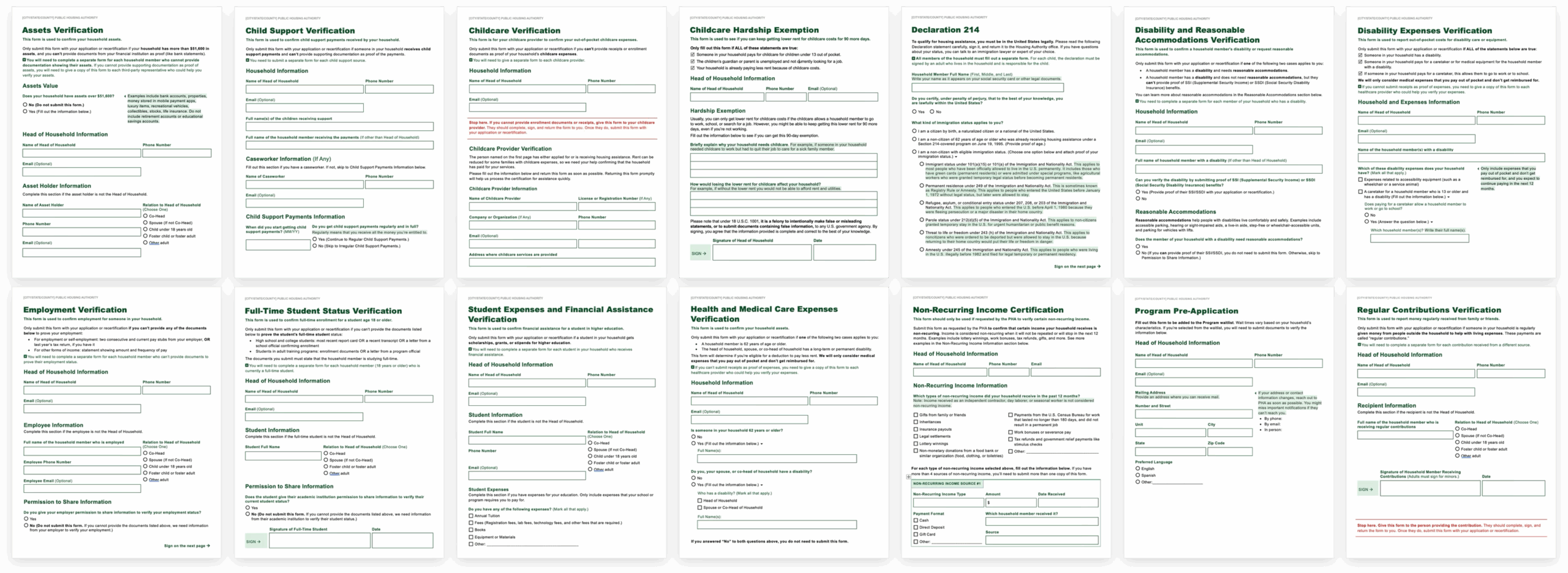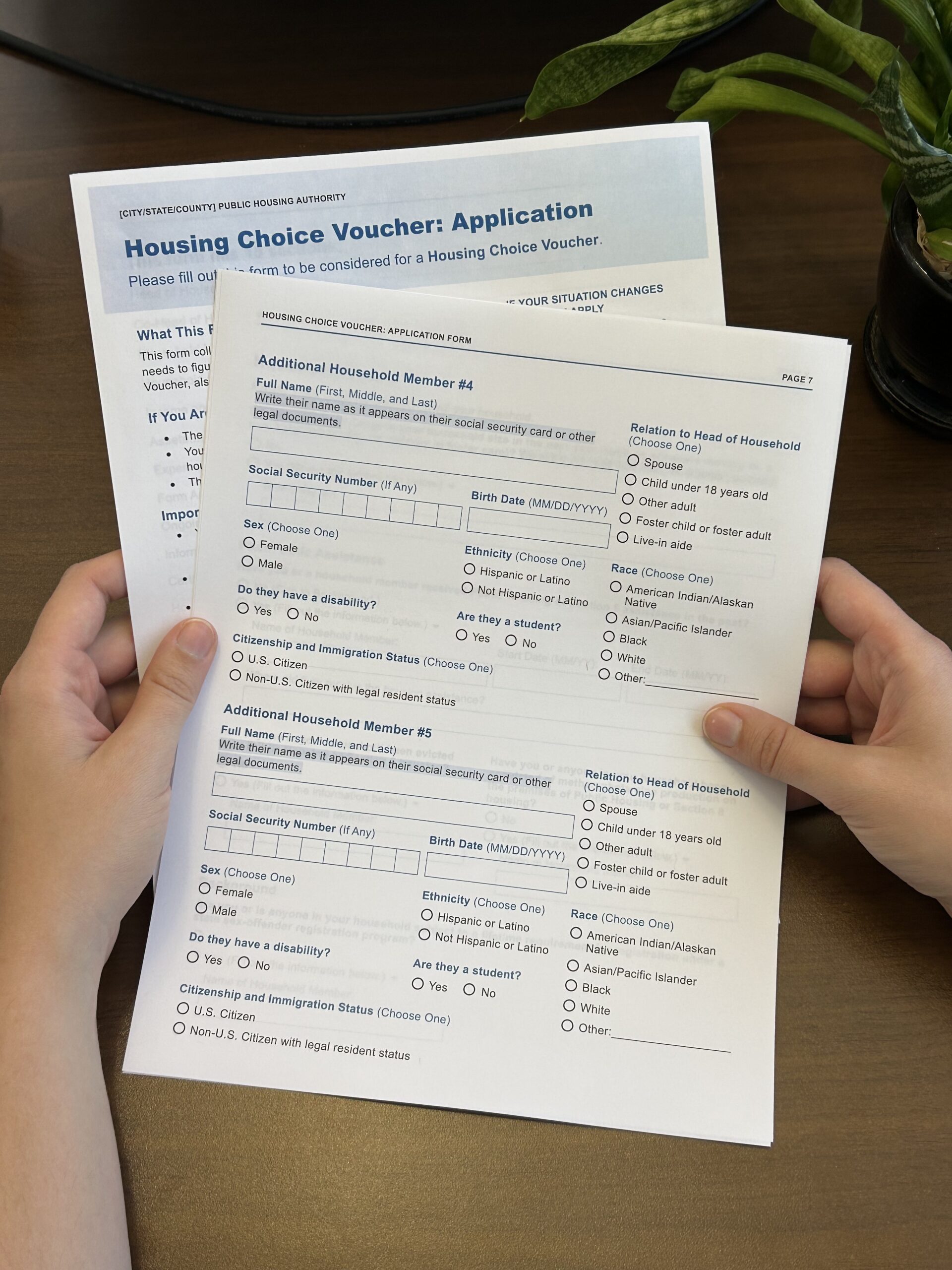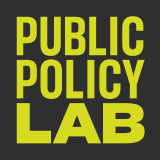National Common Application for Subsidized Housing
How can the nation’s largest housing subsidy programs simplify application materials while implementing new Federal policy changes?
Partners & Funders
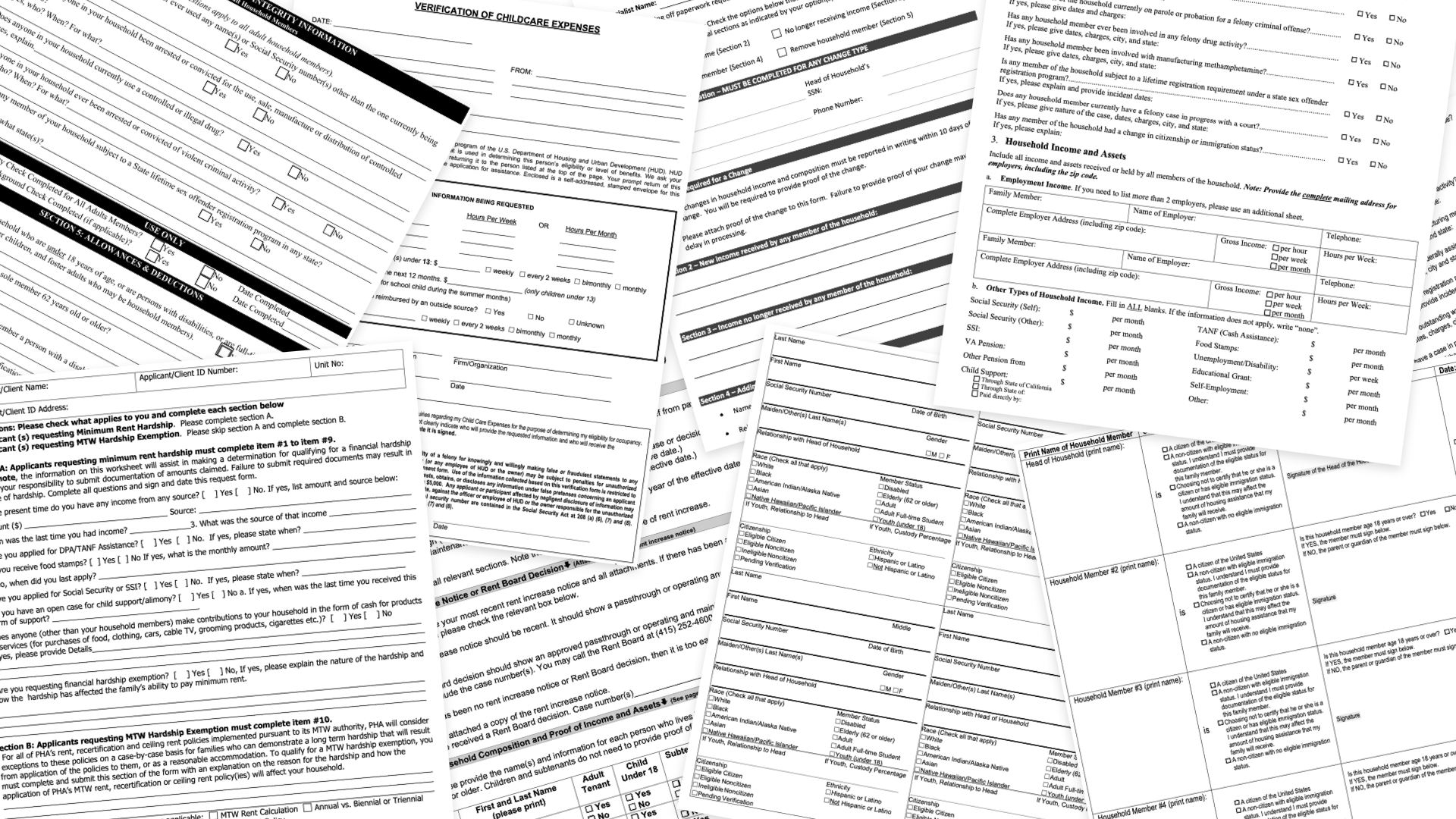
The Project
Nearly five million Americans rely on public housing and Housing Choice vouchers to secure an affordable place to live. However, applying for these subsidized housing programs is often far too challenging. PPL is collaborating with the US Department of Housing and Urban Development (HUD) to simplify tenant applications for the nation’s largest subsidized housing programs and support local housing agencies in meeting new modernization requirements.
The Outcome
Alongside HUD, we created tenant-friendly template forms that comply with new Housing Opportunity Through Modernization Act (HOTMA) requirements. These templates will be used by local housing agencies to create improved application materials, simplifying the tenant experience and connecting more Americans to affordable housing.
National Common Application for Subsidized Housing

How can the nation’s largest housing subsidy programs simplify application materials while implementing new Federal policy changes?
Partners & Funders
The Project
Nearly five million Americans rely on public housing and Housing Choice vouchers to secure an affordable place to live. However, applying for these subsidized housing programs is often far too challenging. PPL is collaborating with the US Department of Housing and Urban Development (HUD) to simplify tenant applications for the nation’s largest subsidized housing programs and support local housing agencies in meeting new modernization requirements.
The Outcome
Alongside HUD, we created tenant-friendly template forms that comply with new Housing Opportunity Through Modernization Act (HOTMA) requirements. These templates will be used by local housing agencies to create improved application materials, simplifying the tenant experience and connecting more Americans to affordable housing.
